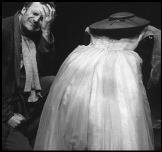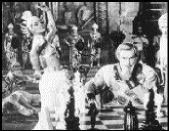WOMEN IN SILENT FILM
runs July 9-30 at Paramount Theatre
DENNIS JAMES, the organ impresario and silent film expert, assures us that we’re fortunate to have the opportunity to see movies much as a ’20s audience did—with live musical accompaniment and projection at the right speed. (Twenty-four frames per second wasn’t then an industry standard, today often resulting in herky-jerky action.) “Seattle is one of the very few places where we can get everything right as far as replication goes,” says James. “We’re doing it the way it should be done.”
So why is it being done in a series with the theme “Women in Film”? Isn’t that more gender politics than film preservation?
Yes and no. There weren’t any Jane Campions in the male-dominated movie business of the ’20s. Female stars had box-office clout, but they weren’t about to risk it by alienating their audiences. In the cornball plotlines of all four Monday screenings James will accompany, the heroine’s goal is always middle-class married bliss.
Nowhere is this pre-feminist sensibility more evident than in the weepy period melodrama that begins the series, La Boheme (1926), starring Lillian Gish. Her extraordinary contract allowed her complete artistic control over her work, yet she chose to play Mimi, another fragile waif who sacrifices herself for her self-involved playwright lover. Of equal Hollywood stature, United Artists co-founder Mary Pickford could make whatever pictures she wanted but felt trapped by her sweetheart image. Still, her sturdy romantic comedy My Best Girl (1927), in which her simple shopgirl wins the boss’ incognito son, remains delightful. Both films reinforced lingering Victorian standards of innocence and purity—even as the roaring ’20s gave rise to the flapper and the vamp.
The new taste, of course, was for sex. The star of It (1927), Clara Bow, scandalized audiences with the way she won the boss—rather than passively allowing herself to be won—by overt, unashamed man-hunting. (“It?” Dorothy Parker quipped, “She had those!”) But in Greta Garbo’s U.S. debut The Torrent (1926), even her self- reliant Spanish peasant girl-cum-opera star still pines for happiness with a spiritual weakling of a man.
As a result, feminist deconstruction of these conflicted screen icons often falls flat. It’s easier to take them as they are: stars buffeted by changing attitudes about and toward women. Enjoy the visceral recognition of Pickford’s struggling working girl or Garbo’s sensuality. When shown at the correct speed, Bow’s girlish turn of the head or adjustment of her clothes will remind you of someone you know today, and you can readily picture your contemporaries—or yourself—in that distant, silent era.








